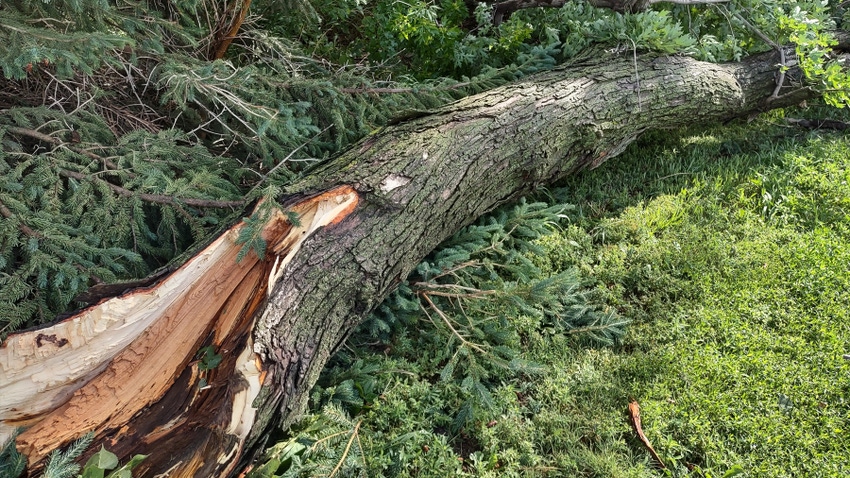
In places across the country where precipitation has been falling, there also have been harsh and extreme storms. With those tough storms has come a fair amount of tree damage from wind and hail.
Our community recently experienced several high-wind events and a number of storm-damaged trees, fallen branches and uprooted trees.
When these events strike, one of the first questions we might ask is whether storm-damaged trees will survive. While this is the most common question from landowners and homeowners, the answer is not always clear.
We’ve gleaned information from forest service and Extension sources across the country to come up with a few guidelines to help with these difficult decisions.
When to keep a tree
If the tree has experienced just a few fallen branches and damage is relatively light, without any major hazardous branches looming above, landowners can prune broken branches that are on ground level, repair rough edges from torn bark around the wounds on the tree and allow the tree to begin the process of healing.
This often takes time. If the tree was healthy and vigorous to begin with, and it did not suffer major structural damage, it has a good, fighting chance.
An example of such a survivor might be a young tree, with a leader or main branch intact and a strong structure for future growth.
When to cull
Sometimes it is best to say goodbye to a tree that can’t be saved, or a tree that is not of desirable species and is not worth saving. Disease- or insect-weakened trees that are already in poor health, trees that have a split leader trunk — or if more than 50% of the crown is gone — are most likely a cull and should be cut down.
Many of these trees might have a rotten inner core or major structural weaknesses before the storm hit. There are times when the wounds are too large and too much of the tree’s crown, which provides its food-making ability, is already damaged or gone.
These trees, if they are large, should be removed by a professional. They can be made into firewood or other wood products, if their wood is still in good shape.
Waiting game
A previously healthy tree that is not already of mature age and is without major structural damage would be considered a borderline situation for keeping. Often, if the tree is of a desirable species in a desirable location on the farm, these are the scenarios where it is best to wait and see how well the tree comes out of the injuries and damage.
Pruning small broken branches, removing rough edges of bark, and monitoring the tree for insect or disease infection will help the tree recover. If the tree doesn’t respond and begins to decline, it can always be cut down and removed.
Whether you decide to keep, cull, or wait and see on the damaged trees around your farm and ranch, be sure to contact a local certified arborist or forest service professional to help guide your decisions.
Never try to do too much on your own when removing hazard trees after storms, and always follow safety guidelines in any tree or branch removal operation.
The Minnesota Department of Natural Resources offers one of the best worksheets at dnr.state.mn.us.
About the Author(s)
You May Also Like






